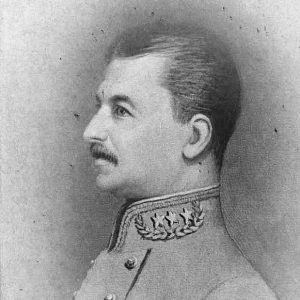calsfoundation@cals.org
Greene’s Operations on the West Bank of the Mississippi River (May 24–June 4, 1864)
Colonel Colton Greene led Confederate brigadier general John Sappington Marmaduke’s Confederate cavalry brigade into southeastern Arkansas in late May to disrupt Federal traffic on the Mississippi River and to stop the cotton trade between Union speculators and local plantation owners. His effective tactics crippled movements on the Mississippi and led to the Engagement at Old River Lake (a.k.a. Ditch Bayou).
Greene’s command consisted of five understrength Missouri cavalry units along with Captain J. H. Pratt’s six-gun Texas artillery battery; they were joined at the end of May by detachments of two Arkansas cavalry regiments and Captain G. W. Hughey’s Arkansas Battery, armed with four cannon. Greene centered much of his activity around the Greeneville Bends, a section of the Mississippi River that was difficult for Federal boats to travel but allowed the Confederates to attack at several points. A narrow point of land between Columbia (Chicot County) and Leland’s Landing allowed them to shell ships as they were coming and going.
The Confederates arrived in Chicot County on May 23, 1864, camping at Campbell’s Plantation near Gaines Landing. At sunrise on May 24, Pratt’s artillery opened fire on the gunboat USS Curlew, hitting the vessel several times, though causing no casualties. They moved slightly south to Session’s Plantation and disabled a pair of Union transports heading up the river, after which Greene sent four guns to Columbia, where they fought and damaged another transport. The rebels then moved to Leland’s Landing, where they engaged in a two-hour battle with the four-gun ram Baltic and marine boat Diana, killing one man and injuring others on the former. Racing back to Columbia, Pratt’s artillerymen opened fire on the USS Romeo, with Greene reporting that “she was swiftly disposed of; struck seventeen times; greatly damaged; got out of the way.” The Missourians ended their day of mayhem by sending a detachment of forty men on a reconnaissance mission in which they boarded and burned the steamboat Lebanon.
Greene’s Confederates were less active on May 25, with the previous day’s action leaving Pratt with only three rounds of solid shot for his artillery pieces, though Confederate sharpshooters harassed Federal gunboats steaming up the river. After firing on a Federal transport on May 26, they feinted along several sites in the area over the next few days, drawing heavy but ineffective shelling from Union gunboats. At daybreak on May 30, the Confederates were at Smith’s Plantation south of Leland’s Landing when they opened fire on the transport Clara Eames, with Greene reporting that they “cut her escape pipe, penetrated her boilers, putting in 17 shots in all.” The stricken vessel came ashore and surrendered, having lost three killed and one wounded; the Confederates captured fifteen prisoners and seized seven African Americans before setting the vessel, which was loaded with cotton, ablaze.
Greene was reinforced by two Arkansas cavalry detachments and Hughey’s Arkansas battery on May 31, and the Arkansans and Pratt’s Texans set up positions the next day near Columbia, where they caught the USS Exchange in “a destructive cross fire.” The battered vessel “was pierced with 35 shots, 8 of that number entering the hull just above the waterline, 5 passing through the casemate and busting in the coal bunkers alongside the boilers.” The Exchange managed to limp away, having suffered one dead and several wounded, including its captain.
On June 2, 1864, Federal ships again passed through the gauntlet of artillery fire at Columbia, with the marine boat Adams and ram Monarch escorting the transport Missouri through around daylight and the Adams returning later with the transport Henry Ames. While the Ames was unhurt, the Adams was hit twenty-eight times with a loss of three men killed and one mortally wounded. Greene observed “on the 3d and 4th no boats appeared. The river was blockaded.”
The Confederate commander reported that during his operations along the Mississippi in Chicot County, he “engaged 21 boats of all descriptions, of which 5 gun-boats and marine-boats were disabled, 5 transports badly damaged, 1 sunk, 2 burned, and 2 captured. My loss was 1 subaltern and 5 privates slightly wounded….These operations have demonstrated the practicability of blockading or seriously interrupting the navigation of the Mississippi River with field artillery.”
Union authorities responded to Greene’s attacks by dispatching 6,000 troops under General Andrew Jackson Smith to Chicot County, resulting in the pyric Federal victory in the Engagement at Ditch Bayou on June 6, 1864, and the partial burning of Lake Village (Chicot County).
For additional information:
Shea, William L. “Battle of Ditch Bayou.” Arkansas Historical Quarterly 39 (Autumn 1980): 195–207.
Simons, Don R. In Their Words: A Chronology of the Civil War in Chicot County, Arkansas and Adjacent Waters of the Mississippi River. Lake Village, AR: D. R. Simons, 1999.
Smith, Myron J. “Interdicting the Mississippi: Colton Greene vs. The U.S. Navy.” North and South 12, no. 6 (March 2011): 30–39.
The War of the Rebellion: A Compilation of the Official Records of the Union and Confederate Armies, Series I, Vol. 34, part 1, pp. 946–953. Washington DC: Government Printing Office, 1891.
The War of the Rebellion: A Compilation of the Official Records of the Union and Confederate Navies. Series I, Vol. 26, pp. 323–324, 354–357. Washington DC: Government Printing Office, 1914.
Mark K. Christ
Central Arkansas Library System


 Colton Greene
Colton Greene 



Comments
No comments on this entry yet.